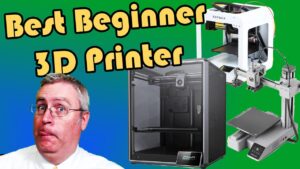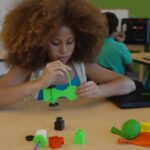Choosing the Right 3D Printer for Beginners
Getting started with 3D printing is exciting but can feel overwhelming for beginners. The right 3D printer makes all the difference, ensuring a smooth and enjoyable learning experience. By understanding your needs and key features, you can confidently choose a printer that aligns with your goals.
Understanding Your Needs
Before diving into the world of 3D printing, identify what you plan to create. Are you interested in printing small decorative items, functional tools, or intricate prototypes? Your intended use determines the type of printer and features you need. Beginners often start with simple projects, so prioritize ease of use over advanced capabilities.

Budget Considerations
Budget is a crucial factor when choosing your first 3D printer. While high-end models offer advanced features, beginner-friendly printers provide excellent results without breaking the bank. Set a realistic budget and explore options within that range. Remember, you’ll also need to account for materials and maintenance costs.
Ease of Use
A user-friendly printer is essential for beginners. Look for models with straightforward setup processes and intuitive interfaces. Many beginner-friendly printers come pre-assembled or partially assembled, saving you time and frustration. Features like auto-bed leveling and touchscreen controls further simplify the experience.
Build Volume and Resolution
The build volume determines the maximum size of your prints, while resolution impacts the level of detail. Beginners typically start with medium-sized printers that offer a balance between size and ease of use. Ensure the resolution meets your needs for creating detailed and precise models.
Material Compatibility
Beginners should focus on printers compatible with easy-to-use materials like PLA filament. PLA is versatile, biodegradable, and works well with most entry-level 3D printers. Avoid more complex materials like ABS or PETG until you gain experience, as they require specific settings and conditions.
Support and Community
Reliable customer support and an active user community are invaluable for beginners. Choose a well-known brand that offers clear manuals, tutorials, and responsive support. Additionally, an active community provides access to forums, troubleshooting tips, and project inspiration.
Open or Closed Frame Printers
Open-frame printers provide visibility and are often more affordable, while closed-frame printers offer safety and stability. For beginners, a closed-frame printer is ideal if you prioritize safety, especially in environments with children or pets.
Software and Connectivity Options
Most 3D printers come with proprietary or open-source slicing software. Beginners benefit from software with user-friendly interfaces and preloaded settings. Connectivity options, such as Wi-Fi or USB, add convenience by allowing easy file transfer and remote monitoring.
Popular Beginner-Friendly Models
Some popular beginner-friendly 3D printers include the Creality Ender 3, Prusa Mini, and Anycubic i3 Mega. These models are known for their affordability, reliability, and ease of use, making them excellent starting points.
Conclusion
Choosing the right 3D printer as a beginner ensures a smooth and enjoyable entry into the world of 3D printing. By focusing on your needs, budget, and essential features, you can find a printer that suits your goals and skill level. With the right choice, you’ll unlock a world of creativity and possibilities, making 3D printing a rewarding experience.



